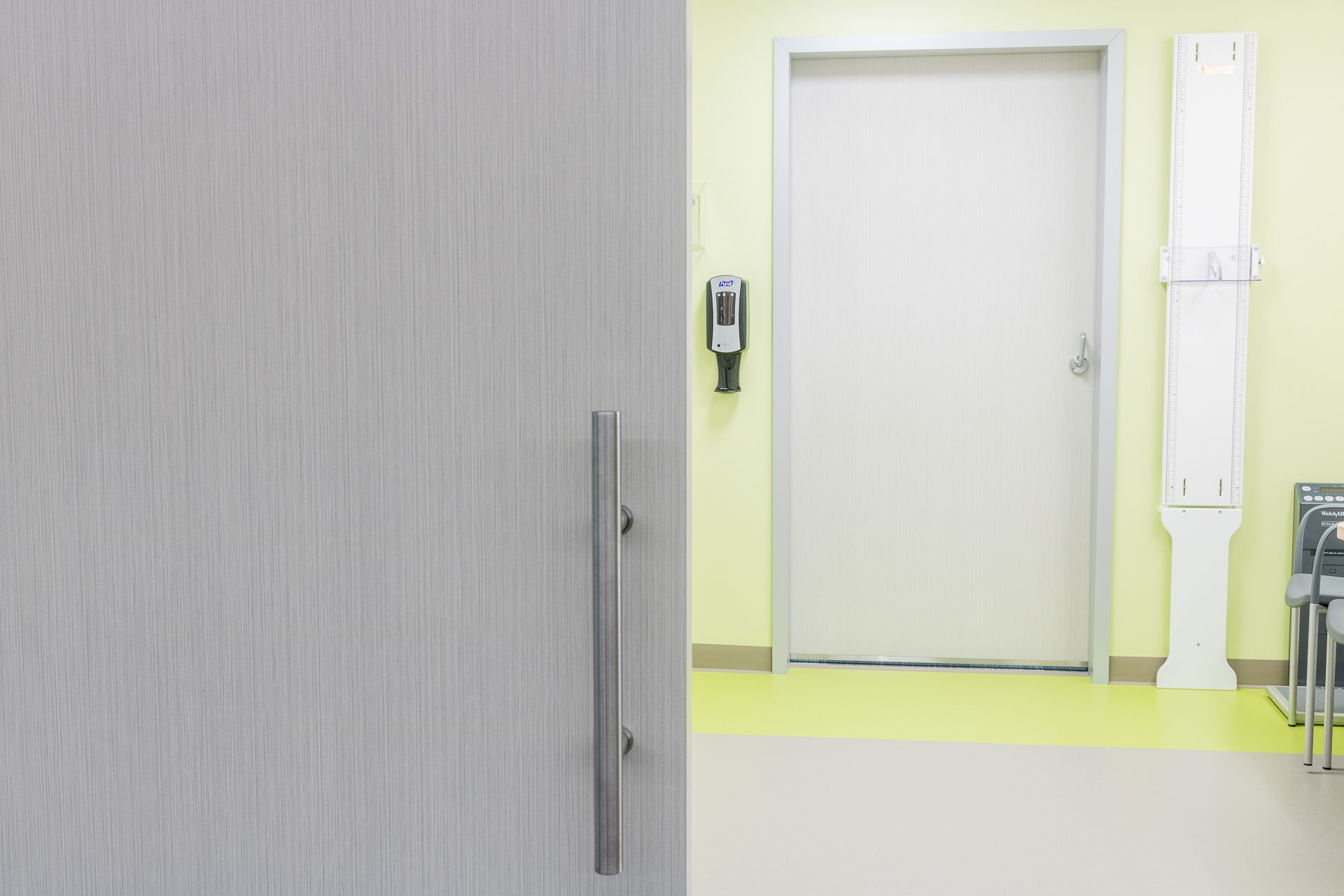
When it comes to healthcare facilities, design experts are used to thinking one step ahead. And as best practices for social interactions continue to emerge, healthcare facility leaders will undoubtedly consider changes in spatial design. Adhering to social distancing guidelines, reducing points of contact and increasing capacity for negative pressure rooms will likely be essential – especially in inpatient facilities.
Quickly reducing occupancy will be a primary objective when it comes to reimagining healthcare facilities. Communal gathering spaces and high occupancy waiting rooms are expected to subside as practicing social distancing becomes a mainstay in modern society (at least for now). Reflecting on the Design Beyond 2020 roundtable topics of discussion, our interior sliding door systems for inpatient applications could make a direct impact on the future of healthcare design.
Here are some key takeaways:
Automation with AutoMotion™
Of all the surfaces in inpatient facilities, doors are indisputably one of the highest touchpoints. Any room or bathroom entrance often requires physical interaction, especially with the door handle itself. To help protect against the spread of infectious disease, a door with automation becomes ideal.
As inpatient facilities across the country examine how to minimize high-traffic contact points, the door handle will be a top consideration. Some innovative interior sliding door manufacturers are now offering a system with a robust auto operator. For example, our new AutoMotion™ sliding door system allows occupants to wave a hand, step on a footpad or use other actuator options to initiate a completely touchless door operation experience. Having automation on an interior slider helps reduce the spread of germs and bacteria, as patients and staff do not need to come in physical contact with the door when entering and exiting high-trafficked areas and public bathrooms.
In the past, facilities have worried about the cost and maintenance demands associated with automatic interior sliding doors. However, we anticipate this will quickly change as infection control becomes a global priority. We are more cognizant about contact points than ever before and believe this will play a role in patient satisfaction surveys if action is not taken.
More Negative Pressure Rooms
In Design Beyond 2020 and other discussions regarding potentially long-lasting changes to inpatient facilities, the topic of negative pressure rooms frequently arises. This solution can be deployed for individual isolation rooms, and we may see it expand to entire departments or floors as an infection control strategy. When thinking about the importance of negative pressure rooms, the design of the door plays a major role in the room’s effectiveness. Interior sliding door systems are being used more frequently for isolation rooms in inpatient facilities. AD Systems supplies ExamSlide™ doors with features such as self-closers, drop seals and even UL 1874 ratings for use in areas where sealing a door tightly is a key to airflow management.
Remote Monitoring
Remote monitoring is poised to be a key strategy for providing care to patients in isolation rooms. Technology solutions will undoubtedly play a role in making remote monitoring possible, but building new technology could be a critical solution as well. Incorporating more glazing to allow for visual communication between patients in isolation and their care providers or visitors is also likely to emerge. Following suit, inpatient facilities will be in need of door solutions that allow for a combination of transparency and privacy while also maintaining infection control standards.
To improve occupant wellbeing on both fronts, we anticipate an uptick in demand for specialty glazing products, such as hermetically sealed integral blinds and switchable privacy glazing. Since these offer a balance of privacy and viewing, they are solutions AD Systems has previously employed in emergency department and acute care settings’ interior sliding door systems. Given their effectiveness, we look forward to contributing to the improved safety and wellbeing of healthcare facility occupants.







